Helen H. Moore's Blog, page 699
August 4, 2016
Arizona’s Lady Trump: Kelli Ward is running a Donald-esque primary challenge to John McCain — and she just might win
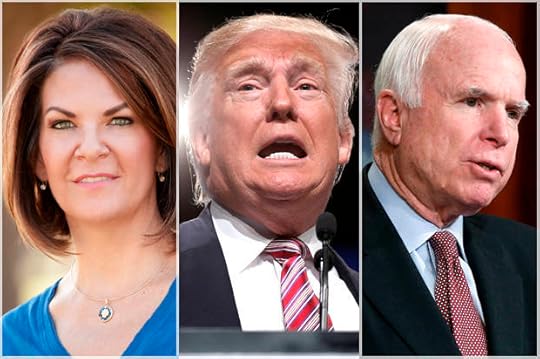
Kelli Ward; Donald Trump; John McCain (Credit: Wikimedia/Reuters/Carlo Allegri/Jonathan Ernst)
It’s been a big week for Kelli Ward, John McCain’s challenger in the Aug. 30 Republican primary. McCain offended the Trumpian base — which is particularly strong in Arizona — by criticizing Donald Trump’s attacks on Khizr and Ghazala Khan, parents of a fallen soldier who have been denouncing Trump’s anti-Muslim bigotry. Trump then returned the favor by refusing to endorse McCain, even though McCain is facing a competitive primary.
Enter Ward. The 47-year-old osteopath has been serving as a state senator in Arizona for four years and has been polling the strongest in a primary race against McCain. Now that one of the other challengers, Alex Meluskey, has dropped out, Ward is even better set to coalesce the anti-McCain vote behind her.
Ward doesn’t believe that Trump’s popularity is, as some might think, a cult of personality situation, but the result of a conservative revolt against the “political elite.”
“He said things that many Americans were thinking,” she told Salon in an interview Tuesday afternoon. Trump is “surfing” a wave of conservative anger and resentment, she explained, and she believes she is “at the top of the wave.”
“I don’t want a political career,” Ward claimed, smoothing over the four years she’s already spent as a state politician. “I’ve got a great life as a wife and a mom and a family doctor, a person who gets to serve the people.”
So why run? Because Ward really despises — there is no other word for it — McCain.
“After he ran in the last primary and he walked along the border and he said build the danged fence and he went back to Washington, D.C.,” Ward angrily explained of McCain, “he quickly joined the open borders crowd, the ‘Gang of Eight’ amnesty bill.”
The “Gang of Eight” is a derogatory nickname that anti-immigration conservatives have for the bipartisan group of senators who attempted to pass immigration reform in 2013. Even though the bill would have made it extremely difficult for undocumented immigrants to get citizenship — forcing them to endure a 13-year, backbreaking process — the conservative base still saw it as “amnesty” and revolted, leading House Republicans to kill it.
Ward is running on a smorgasbord of Tea Party-style conservative issues: Guns, ending Obamacare, ending Common Core. But at the heart her campaign is, as is Trump’s, about stoking anger and resentment over immigration.
“I want to mix the mortar to fix the border,” Ward explained, before going on to paint a detailed picture of her goal of “an all-encompassing, all of the above approach” to militarizing the border with Mexico. (The Canadian border did not come up during the interview.) She went on to describe her vision: Concrete walls, fences, underground sensors, and cameras.
“And then we have to empower our Border Patrol to actually do their jobs,” she said excitedly. “Their job is keep people from coming into this country illegally, not to welcome them with a basketful of goodies and a bus ticket from Phoenix to points unknown within the United States.”
Ward had a lot of concerns about “goodies.”
“We have to turn off the goodies” for immigrants, she argued. “And the goodies are jobs, free education, free health care, free housing, free babysitting.”
Before I had a chance to question whether it was really true that undocumented immigrants are getting taxpayer-funded babysitting, Ward hastened to add that these are “the things people can get if they get here and get any kind of status. And many people who come here illegally are able to get status of some sort to be a burden to the taxpayer.”
Ward shares more with Trump than his views on immigration over our southern border. Even though her website forefronts “Support for Our Military and Veterans” as a top three issue, Ward rushed to attack McCain taking the side of the Khan family over Trump.
“The Khan controversy is a cynical political stunt cooked up by the Clinton Establishment, and, sadly, John McCain has fallen right into it,” Ward said in a written statement. “McCain’s statement today makes clear that he really wants Hillary Clinton in the White House, and his tepid ‘support’ for Trump is only disingenuous pandering.”
She went on to instruct the Khans to be angry instead at “Hillary Clinton and John McCain” who she argues “sent their son into an unnecessary war”. She accuses Clinton and McCain of having “fuzzy utopian ideals” that ” have destabilized the Middle East and triggered a massive refugee crisis, which they want to import into the U.S. to fatten up the welfare rolls.”
(Quick fact check: It was not actually Hillary Clinton and John McCain who invaded Iraq, as this press release suggests, but President George W. Bush, after breaking a promise to the Senate to explore diplomatic options before resorting to war. Also, Clinton has offered 65,000 as the number of Syrian refugees she proposes taking in, which is a tiny fraction of the 4.8 million people who have fled the country.)
Ward, like Trump, is banking heavily on the notion that this populist form of conservatism, which is less about “small government” and more about stoking racialized resentments, will be the ticket to reinvigorating the Republican party.
“John McCain is the ultimate establishment insider. He’s the incumbent of incumbents,” she said. “I think the reason he’s losing a reliably red state to a rubber stamp Obama Democrat is because of his poor voting record.”
McCain’s approach this primary has been mostly to ignore Ward publicly, though his campaign did run an ad accusing her of wanting to spend “your tax dollars to entertain ‘chemtrail’ conspiracy theories.”
McCain is not actually losing to his Democratic challenger, Rep. Ann Kirkpatrick, but the race is more competitive than it has been in the past, leading some Democrats to call for more party resources and attention to Arizona. But, as Politico reported, it’s probably not because McCain is failing to suck up to Trump enough, but because Trump is hurting Republicans across the board.
“Trump is deeply unpopular among Hispanics, as is Maricopa County Sheriff Joe Arpaio, a prominent Trump ally,” Theodoric Meyer of Politico writes. “And Arizona has a higher percentage of eligible voters who are Hispanic than any other battleground state.”
Still, Ward is not wrong to think she has a chance at unseating McCain. There’s very little in the way of primary polling in Arizona, but a May PPP poll showed McCain only pulling 39% in a crowded field of 5 candidates. Ward was coming in second, at 26%, with the others trailing behind in the single digits.
Twenty-six percent is low, but between McCain’s low numbers and Trump’s popularity with Arizona Republicans, it’s easy to see how Ward, by aligning herself with Trump and attacking McCain, could pull off a primary upset over the Republican who has come to represent cowardice and compromise in the eyes of the right wing base. Winning the general election, however, is a different story altogether.
August 3, 2016
“Suicide Squad”: One mediocre anti-superhero movie reveals Hollywood’s multiple disorders
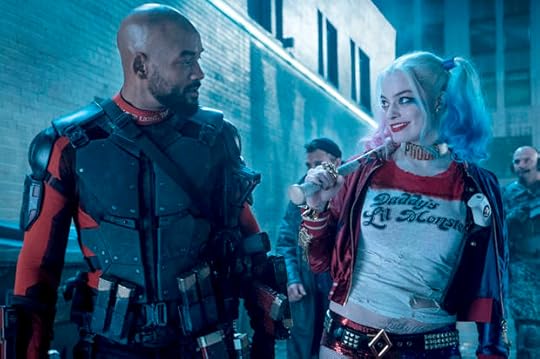
Will Smith and Margot Robbie in "Suicide Squad" (Credit: DC Entertainment)
We reached the decadent phase of superhero cinema some time ago, somewhere around the X-Men prequels and the second Thor movie and the failed Spider-Man reboot. (As one friend of mine puts it, Andrew Garfield is now the Timothy Dalton of Spider-Men.) But decadence is supposed to be fun, surely, or at least more fun than the desperate, sludgy, frantic mess of “Suicide Squad.” This assemblage of good-bad characters scraped from the bottom of the DC Comics barrel was constructed to fill the late-summer surprise hit niche established a couple of years ago by Marvel’s “Guardians of the Galaxy.”
But that’s not something you can calibrate in advance: “Guardians” actually was a surprise, whereas “Suicide Squad” is mega-budget Hollywood product masquerading as something hip and edgy and anarchic, a crude evasion that partly accounts for the way it’s being savaged by critics. (Sure, it’s terrible. But it’s not even close to the worst movie of the summer or the year.) It has big stars, although their impact is pretty damn small: Will Smith tries to complexify his boring action-movie persona by playing the hit man known as Deadshot, but his entire story arc is about how much he loves his daughter. It has Jared Leto playing the Joker, to which I can only say that I have seen Heath Ledger act this role, sir, and you are no Heath Ledger. It has Viola Davis doing her stern vice-principal act for a big paycheck, and why not? It has Margot Robbie as Harley Quinn, a psychiatrist turned psychotic, slutty cheerleader type, and if critics are falling out of their trees over her I suppose the reasons are obvious.
“Suicide Squad” reportedly had a $175 million budget, and whatever was left over after they paid Will Smith went toward the CGI effects, which rate about a B-plus in expensive crap-movie terms. Somewhere way down the pay scale was imported prestige director David Ayer, who made the World War II film “Fury” with Brad Pitt and the excellent L.A. cop drama “End of Watch.” You can understand, in vague hypothetical terms, why Ayer seemed like a good fit for this project, and you can find a few faint glimmers of his personality herein, as in the character Diablo (Jay Hernandez), a flame-throwing East L.A. gangbanger who yearns to go straight. But if Joss Whedon has concluded that the second “Avengers” film, a massive worldwide hit, was a career misfire, one can only speculate how Ayer will view “Suicide Squad” in a few years (or how he feels about it right now).
At any rate, “Suicide Squad” has been built up all year long as the summer’s hottest, hippest popcorn flick, and the terrible reviews will have little impact on its opening weekend. The only thing remotely surprising about this movie is how profoundly second-rate it turned out to be at every level of conception and execution. I liked this kind of pseudo-dark, pseudo-sexy CGI spectacle better when it was called “Underworld: Evolution” and featured Kate Beckinsale kicking ass in a catsuit.
Maybe the second-rateness is not so surprising either. “Suicide Squad” presents symptoms of two separate but often concurrent Hollywood diseases: Amorphous Antagonist Syndrome and Snakes on a Plane Disorder. As in the deeply forgettable “X-Men: Apocalypse,” which came out earlier this year and already seems never to have existed, the ultimate villain in this movie is some shapeless ancient entity newly released from the tomb, or perhaps from a 2006 PlayStation game. He runs around roaring and shooting tangles of electrical current at Deadshot and Harley and Diablo and Boomerang (Jai Courtney) and Killer Croc (Adewale Akinnuoye-Agbaje) and the other supervillains-turned-heroes in this so-called story, but we never get a good look at him, perhaps because the design team never made any final decision about what he looks like.
This feeling that the purported central conflict and the climactic scenes of conflict are no more than afterthoughts has become so pervasive in comic-book action movies that it must be conscious. Have studio marketing teams determined that viewers only care about the characters and the setup — the world-building, in effect — and not about the plot or its resolution? I mean, it’s not an illogical conclusion: Summer tentpole movies almost always begin well, relatively speaking, with some vestiges of wit and narrative ambition, and end in incomprehensible chaos. Furthermore, any possible big action scene, at this point, can only echo or repeat or parody other action scenes we’ve already seen. As Karl Marx observed, history repeats itself, and if the first version is directed by Christopher Nolan, the copies are by Michael Bay.
Moving from the first above-mentioned disease to the second, “Suicide Squad” presents the tragic and/or pathetic modern spectacle — using “pathos” in its original, Aristotelian sense — of an enormous fan base so hungry that it mistakes the aroma for the meal. “Snakes on a Plane” presented the Ur-example in many ways, because the concept and the title was the all-in-all, and the actual movie was ancillary to the cultural moment. But that was at least an audience-created moment, and to a significant extent fans were in on the joke; many were aware, I suspect, that the movie might not be worth seeing. “Suicide Squad,” on the other hand, has been marketed intensively to the ComicCon audience as something close to a redemptive experience, especially for DC fans who felt — how do we put this? — mixed emotions about “Man of Steel” and “Batman v Superman,” Zack Snyder’s post-Nolan ventures.
As I suggested earlier, critics can get overly invested in these Hollywood spectacles too, and “Suicide Squad” is being punished for assembling so much talent with such lackluster results. I haven’t even mentioned the soldier-plus-witch love story subplot featuring Joel Kinnaman and Cara Delevingne. Because it’s so boring! If there are really fans out there who believe that “Suicide Squad” delivers peak awesomeness, or who need to cling to that dogma with Sharknado-like tenacity, then that’s great. We’re talking about a movie meant largely to entertain young people out with their friends on hot August nights, not Donald Trump. It would be asinine to begrudge other people their enjoyment. It’s not one mediocre anti-superhero movie that bothers me. It’s the immense cultural starvation, and the deep-seated willingness to believe that giant entertainment conglomerates hold the only possible remedy.
Just like ’80s nerd heaven: The seductive nostalgia of “Stranger Things” — and my unexpected ambivalence
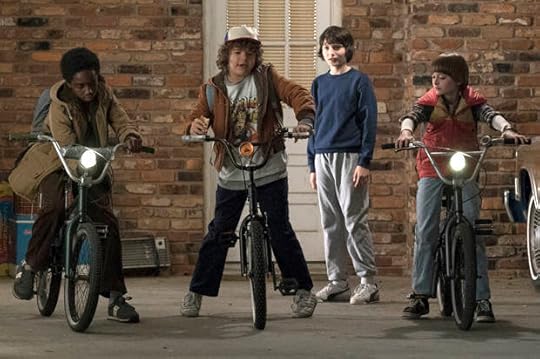
"Stranger Things" (Credit: Netflix/Curtis Baker)
If you’re like me, then you’re nostalgic for your childhood, specifically the pop cultural detritus of movies, TV, and playthings from whatever era that recalls your younger days.
And if you’re a child of the 1970s and ’80s, as I am, then you’ll be especially susceptible to the charms of “Stranger Things.”
Last month, the highly entertaining series hit the streaming and binge-watching portal of Netflix by storm. The storyline follows the fates of a quartet of nerdy, pre-teen boys, three of whom — Mike (played by Finn Wolfhard), Dustin (Gaten Matarazzo), Lucas (Caleb McLaughlin) — task themselves with solving the sudden disappearance of fourth, Will Byers (Noah Schnapp). An enigmatic girl with psionic powers named Eleven (played brilliantly by Millie Bobby Brown) becomes entangled with the trio. She helps the boys on their quest while, in parallel, other residents of the fictional small, Indiana town of Hawkins, including Will’s mother Joyce (Winona Ryder) and police chief Jim Hopper (David Harbour), get drawn into the intrigue.
The premise alone of this creepy, character-driven paranormal thriller should work, regardless of its Twin Peaks-ian setting. But the secret sauce of “Stranger Things” is its copious ’80s references.
“Stranger Things” is set in an ancient time — the Reagan Administration. For me, my formative sweet spot. Naturally, part of me delights in the throwback lingua franca the series uses to speak to Gen Xers.
I was young teen myself in 1983, the year in which “Stranger Things” is set. I consumed much of the pop-culture that the show unabashedly name-drops. I watched the movies it echoes — “Close Encounters of the Third Kind,” “Poltergeist,” “Alien,” “The Thing” and “Red Dawn,” as well as John Hughes fare like “The Breakfast Club” and “Sixteen Candles.” I listened to the songs on the “Stranger Things” soundtrack, from The Clash’s “Should I Stay or Should I Go” and Toto’s “Africa” to Tangerine Dream’s “Beach Scene” and “Atmosphere” by Joy Division. That classic music, plus the original synthesizer score by Kyle Dixon and Michael Stein (from the synthwave group Survive), sucker-punch me like an aural Proustian cookie.
Like our trio of nerdy protagonists, I rode around my woodsy neighborhood on a one-speed bike with a banana seat, and chattered with my pals on Realistic brand walkie-talkies. I played Dungeons & Dragons obsessively.
Heck, even the show’s title font recalls the book jacket designs of 1980s Stephen King novels. The show’s pastel-hued promo poster may as well be for “Adventures in Babysitting” or “Raiders of the Lost Ark.”
Everywhere you look and listen in this show, you can tune into the frequency of that retro vibe: kids with flashlights in the rain, mysterious vans, nefarious governmental scientists in hazmat suits hatching secret plots, poltergeists that stretch your bedroom wallpaper like a latex glove.
It’s a joyride to return to those cultural touchstones. Now that I’m approaching 50, at times I want to feel like I could be 12 again, embarking on a real-life adventure of consequence beyond the confines of my Dungeon Master screen (or MacBook Air screen).
Yet, my feelings are mixed. For every inward sigh at the boys’ excited jabbering about the “Demogorgon,” or smile at seeing Mom (Ryder) make a call on her canary-yellow rotary dial phone, or twinge of recognition as a jocks-versus-nerds schoolyard battle erupts (guess which side I was on?), I felt a poke of discomfort. Has “Stranger Things” raided, even exploited, the pop culture memories of my pre-adolescence? I feel torn, Gollum-like, over the insidious and wonderful lure of this show.
Cleverly, the series inserts as many props from the Cold War as possible: a Panasonic boombox, mix tapes on Memorex cassettes, Snack Pack canned chocolate pudding, manually developing black and white film shot on a Pentax SLR camera. Not only that, the plot itself mirrors many 1980s, boy-centered adventure films like “The Goonies,” “E.T. the Extra-Terrestrial” and “Stand By Me.” Those stories trafficked in an emotional landscape of mysterious aliens, government plots, and kids who outwit their inept parents and other adults. It was a kind of story pioneered by Steven Spielberg, whose “E.T.” is the genre’s Rosetta stone, and later revived by others like J.J. Abrams in films like “Super 8” and, to a lesser degree, David Green’s “Earth to Echo,” not to mention Ernest Cline’s novels “Ready Player One” and “Armada.” All offer powerful fantasies of empowerment and escape.
In “Stranger Things,” even the opening scene of Will’s first encounter with the paranormal force, which occurs in the shed behind his house — and I won’t reveal more than that — mimics the inciting incident in “E.T.,” when the D&D-playing Elliot first encounters the alien.
In fact, it’s because the young heroes of “Stranger Things” play D&D that they can consider that Will’s disappearance might be the result of fantastical, even irrational events. As I argue in a recent TEDx talk, analog storytelling tools like D&D can help you enter this imaginative, problem-solving, mind-opening head-space.
The show’s dive into the deep end of nostalgia is rich and complex, and, I admit, a brilliant tactic on the part of the filmmakers, twin brothers Matt and Ross Duffer. Because of the choice to evoke the 1980s, one might expect the writer-director Duffers to be from my generation — far into their forties, at least — but in fact they were born in 1984, a year after Will goes missing and Eleven shows up in Benny’s Diner. “We’re just nerds really, so we love all this stuff, really,” Ross said in a recent interview.
Yes, the “Stranger Things” creators pillaged my beloved ‘80s pop culture. But despite all the pointed shout-outs the Duffer Brothers crammed into the story, the series never feels like a soulless knock-off or a pointless nostalgia trip.
Forget my initial grumpiness. I truly love the show, and so should you. Yet I wonder if there’s more to its appeal.
Perhaps the Duffer Brothers didn’t want to only create an homage to vintage pop culture. They’ve recreated a world when things were simpler (and yet at the same time, much more complex — see: “the upside down.”) To create a story-space for Millennials to journey back to the pre-digital, tactile world before the Internet, before smartphones, Tinder and Pokémon Go. A time before helicopter parents over-scheduled their children’s lives, when “afterschool program” meant the freedom to ride your bike to a quarry or a junkyard and get into trouble, or just hang out with your buddies in the basement, scheming.
A time when one’s worldly knowledge might be confined to the D&D lore you could cram into a three-ringer binder.
Of course, the 1980s weren’t all that simple. And in many ways my pre-teen and adolescent years were a total disaster. But I survived them. At least “Stranger Things” lets me go back and try a do-over. In 1982, The Clash asked “Should I Stay Or Should I Go?” If we’re talking about the 1980s, I say, we don’t have to only stay here, in 2016. There are lessons to be found in New Order and Corey Hart’s “Sunglasses at Night,” in Dragon Magazine and “A Nightmare on Elm Street.”
I say: Let’s go.
Trump: “Crooked” Hillary Clinton “should get an award … as the founder of ISIS”
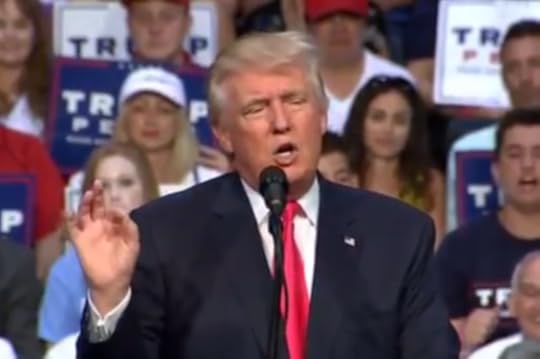
GOP nominee Donald Trump during a town hall in Daytona Beach, Florida, on Wednesday said Hillary Clinton “should get an award … as the founder of ISIS.”
“We let ISIS take this position,” Trump said, seemingly trying to say that the United States’ Middle East policy — under then-Secretary of State Clinton — bolstered ISIS’s strength in the region.
The crowd then started to chant “lock her up” before Trump zig-zagged his way back to Clinton’s email scandal.
“She lied,” Trump said, referring to the FBI’s findings. “You have the FBI director [James Comey] saying she lied, she’s negligent, saying all of these things, and now she’s running for president. Shouldn’t happen. Shouldn’t be allowed to happen.”
“This was all started by her,” he continued, apparently blaming the entirety of U.S. involvement in Yemen — if not the entire Middle East — on “crooked” Hillary Clinton. “They relied on it.”
Apple is coming for our gun emoji: The new “water pistol” isn’t an equal swap

(Credit: Apple/Salon)
Earlier this week, Apple enthusiastically announced — and unveiled — some long-awaited updates to its slate of emojis, a collection that will better reflect and celebrate the diversity of its users. Good one, Apple. But as a peaceful liberal who like any sane person supports reasonable measures on deadly weapons, I need to ask, what in the hell have you done to my gun?
More than one hundred new emojis will be available to iPhone and iPad users when the iOS 10 rolls out this fall. They will feature a rainbow flag, different family configurations, and a broader racial and spectrum of character possibilities. It will also replace the gun emoji with a green water pistol. ¯\_(ツ)_/¯ right?
Apple has not always been the greatest at remembering that not everybody looks or thinks like a bunch of white dudes from Cupertino. Let’s start with the fact that the clearly wasn’t workshopped by a group of women. Or how about those staircases in the Apple stores, that don’t seem to take into account that some patrons wear skirts? The company has in the past taken the confusing stance that the words for female genitalia are offensive, but not male genitalia. But it has endeavored to evolve. Last year, the company at long last offered users five different skin tones for its emoji characters, added more racially-diverse images and included same-sex families.
Now, in its newest update, there is more variety, including female athletes, single parents… and that water pistol. Earlier this year, the company nixed adding a proposed rifle emoji. And since last year, a movement has been calling on Apple to #DisarmTheiPhone and recognize that “many Americans unknowingly carry a gun with them every day. The one that was given to them without a background check: the gun emoji.”
Apple appears to have heard, as it readies to swap out the more realistic looking gun image for the green and orange water pistol. Writing in The Guardian Wednesday, writer Jean Hannah Edelstein praised the change, saying, “Changing the emoji isn’t a sign that political correctness has gone awry. It’s a smart, small part in the battle – which we’re presently losing – to keep Americans safe.”
Yes, the image can have threatening connotations, and that can be abused and misinterpreted. As CNN reported Tuesday, “The pistol and other weapon emojis have landed people in trouble with the law. A 12-year-old in Virginia was charged after allegedly threatening her school in an Instagram post that used a gun, knife and bomb emoji. A teen in Brooklyn was arrested for posting a police emoji with pistol emojis pointing at his head. The charges were later dropped.”And in southern France this March, a 22-year old man was sentenced to three months in jail for texting his girlfriend an emoji of a pistol.
But to suggest that we have all somehow been “unknowingly carrying a gun” because we have a cartoon picture of one on our phones is a profound insult to the intelligence of every iPhone user. I care deeply about issues surrounding gun control. I support strong background checks and smart limits on assault weapons. I also know that when I see an emoji, to paraphrase René Magritte, this is not a gun. When I use the gun emoji in a message, it’s to communicate a particular and specific feeling. That feeling is not, hey, water fight. It’s anger or exasperation or putting an end to something — a project, an idea. When I use the bomb or the dagger or the syringe emojis, I am likewise not in the market for a beach ball image. It’s what we fancy writer people call a metaphor. Nobody ever died from one. And you will pry my gun emoji from my cold, dead, yellow hand.
Trump Taj Mahal in Atlantic City to close after Labor Day weekend, reports say
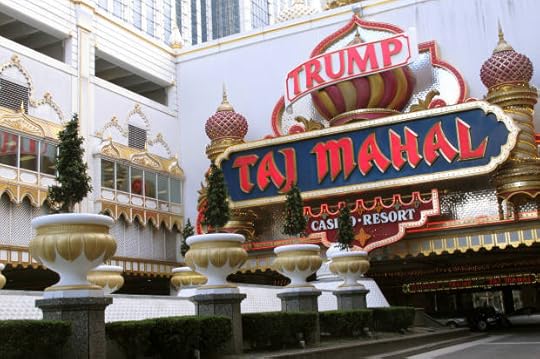
(Credit: AP Photo/Wayne Parry)
Trump Taj Mahal — the Atlantic City, New Jersey, hotel-casino once owned by GOP nominee Donald Trump — will close for good after Labor Day weekend, according to reports.
“Currently the Taj is losing multi-millions a month, and now with this strike we see no path to profitability,” announced Tony Rodio, president and CEO of Tropicana Entertainment, the gaming affiliate of Icahn Enterprises. “Unfortunately, we’ve reached the point where we have will to have to close the Taj after Labor Day weekend and intend to send WARN notices to before this weekend.”
Icahn Enterprises’ namesake, billionaire Carl, purchased Taj Mahal — rescuing it from bankruptcy — from Trump Entertainment Resorts in 2014.
Taj Mahal employees — members of the Unite-HERE union’s Local 54 chapter — have been striking since July 1.
“The Funny Girl” brings the fury: Barbra Streisand bashes Trump, backs Clinton at L.A. concert
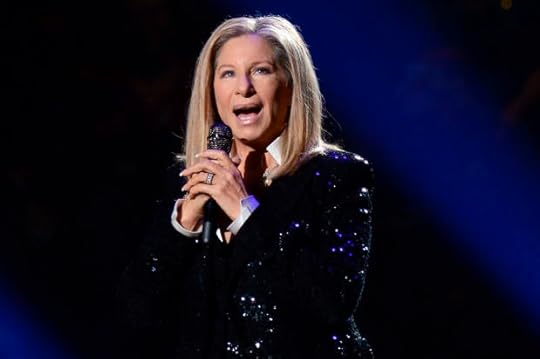
FILE - In this Oct. 11, 2012, file photo, singer Barbra Streisand performs at the Barclays Center in the Brooklyn borough of New York. Streisand is launching a multiple-city tour this summer. Streisand's manager said Monday, May 16, 2016, the entertainer will appear at arenas across the country. (Photo by Evan Agostini/Invision/AP, File) (Credit: AP)
Barbra Streisand performed her first concert in three years yesterday in Los Angeles and wasted no time in using the platform to slam Donald Trump.
She sang some of her most popular songs from her 60-year career, but in between songs, took plenty of time to repeatedly bash Trump; at on point, saying she was enjoying all his gaffes and calling the election a “doozy.”
Streisand said that no matter “what the color of your skin or where you were born — Cuba, China, Malaysia, Madagascar — our genetic makeup is 99.9% identical to every person on the face of the earth. The other .1% is Donald Trump.”
Mind reader Lior Suchard joined her on stage for a comedic bit, after which Streisand said,”The only person’s mind he can’t read is Donald Trump’s because he doesn’t have one.”
She also took time to express her support for Hillary Clinton, explaining how she had sang “Happy Days Are Here Again” for John F. Kennedy, Lyndon Johnson and Bill Clinton, and how she hopes to sing it again “for the next President Clinton.”
The concert was the first of nine on her tour promoting her most recent studio album (her 35th) “Encore: Movie Partners Sing Broadway.”
Breaking down Trump’s infrastructure policy: It’s a good idea nestled in a ruinous economic agenda
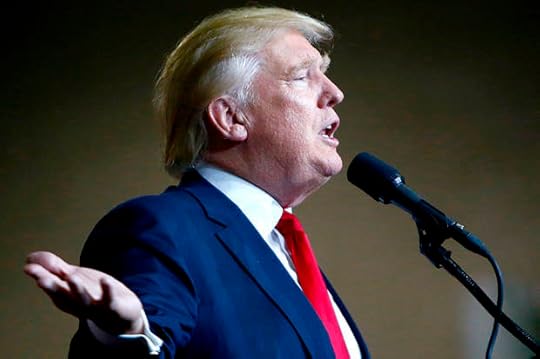
Donald Trump (Credit: Reuters/Eric Thayer)
It tends to get lost amid his flurry of insults aimed at veterans, snipes at GOP officials, suggestions of widespread electoral fraud, and ejections of infants from campaign rallies, but Republican presidential nominee Donald Trump does actually take some time out of his busy gaffe schedule to talk about policy. Often what he says is incoherent and subject to change at any moment, but Trump is still the presidential candidate for a major political party, which obligates us to give his ideas serious consideration and assess how they fit into the broader policy framework.
This week on Fox Business Network, Trump laid out his plan for rebuilding the nation’s infrastructure. Calling Hillary Clinton’s proposed $275 billion on infrastructure spending “a fraction” of what is needed, Trump proposed spending “at least double” that – so $550 billion, minimum – on infrastructure, and he proposed paying for it by creating “a fund” in which investors would buy government bonds. So basically he’s talking about borrowing money to pay for at least a half-trillion dollars in infrastructure improvements.
That sound you just heard was every elected Republican official and national debt scold clenching their sphincters in unison. In 2009, when the economy was on the brink of collapse, congressional Republicans balked en masse at borrowing several hundred billion dollars for economic stimulus (including infrastructure repair), so they’re not going to be especially amenable to Trump’s idea. The politics of the thing also aren’t going to make Republicans very happy: it’s tough to attack Hillary as a “tax-and-spend liberal” when your own candidate has taken one of her proposed spending guidelines and said “double it.”
What’s interesting about all this is that in isolation, Trump’s proposal (vague as it may be) is actually a pretty good policy. “I think it’s a smart idea,” says Lawrence Mishel, president of the left-leaning Economic Policy Institute (EPI). “The fact that you can distinguish [Trump’s infrastructure proposals] from those of the mainstream Republicans only suggests how off-target and ideological are the [Paul] Ryan-type Republicans.” Infrastructure projects, generally speaking, are a strong investment and borrowing money to pay for them makes a lot of sense. An EPI analysis from 2014 estimated that “a debt-financed $250 billion annual investment [in infrastructure projects] boosts GDP by $400 billion and overall employment by 3 million net new jobs by the end of the first year.” Good things, right?
The problem, of course, is that Trump’s infrastructure proposal doesn’t exist in a vacuum. It’s part of a broader fiscal policy platform that Trump has laid out – a platform that was massively at war with itself before Trump proposed an additional several hundred billion dollars in debt-financed infrastructure spending.
The centerpiece of the Trump economic plan is a series of tax cuts that would deprive the government of roughly $10 trillion in revenue, with the vast majority of those funds being funneled straight into the pockets of the wealthy. That’s irresponsible enough on its own, but Trump has also promised to eliminate the existing $19 trillion in national debt in just eight years – a task that would generously be described as “impossible” – while also cutting taxes. On top of that, he’s also promised to not make cuts to two of the biggest items in the federal budget – Social Security and Medicare – while increasing spending on the military.
To assert that this all somehow adds up is to scoff at the very concept of mathematics. If Donald Trump were to defeat the prevailing conventional wisdom and win the presidency, basic math dictates that something in his plan would have to give. And when you look at the policy preferences of Trump’s party, it seems pretty clear that the first item on the block would be the debt-financed infrastructure spending proposal.
That all assumes, however, that Trump is actually giving any serious thought or consideration to any of this. Aside from the tax-cut bonanza, his primary motivation when crafting economic policy seems to be to deprive Hillary Clinton of attack lines. He’s not going to cut Social Security, he’s going to leave Medicare alone, and now he’s going to double Hillary’s infrastructure proposals – that doesn’t leave the Clinton campaign a lot of room to attack him as a heartless spendthrift. He’s compiling a wish-list economic policy that has no trade-offs, and he’s trusting that voters won’t realize (or won’t care) that he’s describing an insane and potentially ruinous policy agenda.
And, of course, nothing Trump proposes can be considered the final word on anything. It’s entirely likely that in a week’s time he’ll sit in front of a TV camera and deny up and down that he proposed spending a single red cent of borrowed money on infrastructure.
Disputing Bratton’s record: Mass stop-and-frisk is over but “broken windows” endures in NYC

William Bratton (Credit: Reuters/Brendan McDermid)
As NYPD Commissioner Bill Bratton makes a sudden exit, seemingly naming his own successor without public input, a heated debate over his legacy continues. Bratton has been criticized for abuses committed by the nation’s largest police department — a department which, thanks to flush funding he secured, has dramatically grown under his watch. But Bratton has also presided over the termination of the NYPD’s most controversial enforcement measure, dragnet stop-and-frisk. Hailed by former Mayor Michael Bloomberg as a key crime-fighting strategy, Bratton has proven doom-and-gloom naysayers wrong by dramatically reducing stops while presiding over historically low crime rates.
“Nothing’s perfect but this really shows that police departments can do what the public is demanding right now, which is to hugely reduce the way they’re using enforcement, especially in minority communities, and also produce more safety,” says David Kennedy, director of John Jay College of Criminal Justice’s National Network for Safe Communities. “That’s what people want.”
It’s not just that, according to city data. The number of people from New York City in jail and state prison has plummeted, as have marijuana arrests and criminal summonses (though pot arrests rose sharply at the beginning of this year).
Bratton, however, had protesters calling for his resignation until the very end thanks to his continued and fervent embrace of broken-windows policing, which targets small-scale quality of life offenses. Like stop-and-frisk, broken windows is sold as a measure that decreases more serious crime.
“We are glad that Bratton is leaving,” says Lumumba Akinwole-Bandele, a member of Communities United for Police Reform. “Absolutely. We never wanted him in the first place.” Mayor Bill de Blasio “ran his campaign primarily on stop and frisk and racially discriminatory policing—and then to hire Bratton was a huge slap in the face.”
The anger over Bratton’s appointment exploded in July 2014, when he and de Blasio were confronted with widespread demonstrations after Officer Daniel Pantaleo placed Eric Garner, suspected of selling loose cigarettes on Staten Island, into a fatal chokehold.
Bratton deserves credit for ending mass stop and frisk, says Brooklyn College sociologist Alex Vitale, and for reducing enforcement of some other low level offenses—like issuing summonses instead of making arrests for requesting MTA card swipes. But “on the other side of the ledger,” he says, there has been “no real accountability for officers involved either in excessive use of force or corruption and misconduct.”
“Broken windows policing,” Vitale continues, “is going full tilt and has even been enhanced in some areas like going after homeless folks…broken windows policing is alive and well in New York, and it’s going to continue as long as the mayor believes in it. And he’s made it clear that he does.”
The number of New Yorkers caught up in the system due to broken windows policing, before and during Bratton, is enormous: NYPD issued 1,839,414 “quality-of-life” summonses between 2010 and 2015 for offenses ranging from public urination to drinking in public. The rate of quality-of-life enforcement, however, declined sharply after Garner’s death. The incoming commissioner, James P. O’Neill, will face continued resistance on broken windows—especially given that, according to a recent report from the NYPD’s inspector general, there is “no evidence” that such enforcement has any effect in decreasing crime.
“Issuing summonses and making misdemeanor arrests are not cost free. The cost is paid in police time, in an increase in the number of people brought into the criminal justice system and, at times, in a fraying of the relationship between the police and the communities they serve,” the report stated. “Given the costs of summons and misdemeanor arrest activity, the lack of a demonstrable direct link suggests that NYPD needs to carefully evaluate how quality-of-life summonses and misdemeanor arrests fit into its overall strategy for disorder reduction and crime control.”
Complaints about broken windows continue to span the city. In East Harlem, homeless people complain that the NYPD is engaged in a crackdown that seems aimed at making their life in the neighborhood impossible. In recent years, more than a hundred thousand summonses have still been issued each year for open container. And the Police Reform Organizing Project complains that people of color made up 86.5% of misdemeanor arrests for the first three months of the year.
“The retirement of Commissioner Bratton is an opportunity to implement new policies that foster accountability and transparency,” said Tina Luongo, attorney-in-charge of the Criminal Practice of the Legal Aid Society, in a statement. “We hope that the Mayor and the new senior management team of NYPD are truly committed to real reform and rebuilding bridges that have long been burned by broken windows discriminatory policing of Black and Brown people.”
After Eric Garner’s death, de Blasio infuriated Patrolmen’s Benevolent Association head Patrick Lynch when he expressed sympathy with protesters. Bratton had union conflicts as well. In response to Bratton’s resignation, the Sergeants Benevolent Association tweeted that “Comm Bratton is finally doing what is right for the NYPD & the ppl of NYC. We wish him well & look forward to a new direction for the NYPD.”
But Bratton and de Blasio have given the city’s police unions little to actually be upset about: The NYPD did little to nothing under his tenure to make an opaque disciplinary system transparent to the public, and serious discipline appears to remain close to non-existent. De Blasio is widely perceived to be deferential to his police commissioner, who he has leaned on to provide him with political cover against conservative-leaning critics. It hasn’t helped. The mayor’s popularity has tanked across the board.
The city has fought NYCLU efforts to gain access to administrative findings against officers accused of misconduct, and individual officer’s records remain largely hidden from the public. That’s true throughout New York as a result of state law. But de Blasio has not backed efforts to reform the law and, in a Legal Aid suit seeking access to Officer Pantaleo’s records, has fought to uphold a broad interpretation of it in court.
“There has continued to be a huge problem in terms of lack of discipline and accountability for police officers who engage in misconduct,” says Christopher Dunn, associate legal director of the NYCLU. “The truth of the matter is that very few police officers face any form of meaningful discipline when they have engaged in misconduct against civilians.”
In 2014 and 2015, prosecutions by the Civilian Complaint Review Board resulted in zero officers being fired.
Civilian complaints against police have declined, and the number of substantiated complaints is up. The former could reflect the end of mass stop and frisk, and the latter could mean either that police practices are worsening or that oversight is improving—two very different things. Dunn suspects that more substantiated complaints reflect an increase in misconduct rather than improved enforcement.
Ending mass stop-and-frisk, which at its 2011 high point stopped young black men more times than the number of young black men who lived in New York, was no small thing. There were 685,724 reported stops in 2011 and 22,939 last year. But that program, after years of protest and civil rights litigation, was already on its way out under his predecessor, Raymond Kelly. Candidate de Blasio was railing against stop-and-frisk on the campaign trail even as federal Judge Shira A. Scheindlin had already ruled that stop-and-frisk was an unconstitutional “policy of indirect racial profiling” that systematically stopped “blacks and Hispanics who would not have been stopped if they were white.”
Three years later, the NAACP’s Akinwole-Bandele is skeptical that reported decrease in stops reflects the reality of policing experienced by people of color on city streets.
“People are still being harassed, their freedom to move about is still being inhibited by law enforcement.”
Some activists, of course, will never be entirely satisfied with the state of the NYPD: one group’s demands include defunding the department. But radical demands have clearly produced results, from the decline in broken windows enforcement following Garner’s death to the end of mass stop-and-frisk. And everyday interactions with police will remain a source of conflict, says Akinwole-Bandele, as long as police are used to address issues often related to poverty and mental health issues.
Just this past Saturday, State Assemblyman Michael Blake, who represents the South Bronx, alleged that a police officer slammed him against a gate as he tried to defuse a conflict between police and residents. If even a state legislator still risks getting roughed up on the street, then the NYPD still has a long way to go to assuage its critics. The run-in echoed a 2011 incident, when City Councilman Jumaane D. Williams and an aide to then-Public Advocate de Blasio were detained after a dispute with officers at the West Indian Day Parade.
“It’s broad daylight, they get thrown to the ground, they both get arrested,” de Blasio said in 2011, before he became a protest candidate and then an embattled mayor. “If that’s what happens to an elected official and a senior appointee, imagine what happens to a general member of the public.”
Instagram’s new Snapchat-esque story feature is a win for fans of the long-distance like

(Credit: Adam Radosavljevic via Shutterstock)
Yesterday Instagram announced that the social media platform will be introducing a new feature that isn’t new to Snapchat users. Instagram now offers “stories ” as well, allowing users to share moments of meaning or minutiae that expire after a 24-hour period.
So why bother with two apps that could potentially share the same story in a similar, nearly identical, format? Easy — consolidation.
It’s a pain to post a story on Snapchat, then another on Instagram, and later follow up on traffic/likes/comments on multiple platforms. Many have criticized Instagram for copying Snapchat’s story feature, but both serve as significant indicators of the evolution of social media and society within the last few years.
Snapchat was first presented to me as a safe form of sexting. Friends celebrated the app for allowing them to send salacious photos and videos to a someone (or multiple someones) without fear of being found out. If the recipient took a screenshot or attempted to save the image, they would be notified, and the images came with an expiration date. This feature was attractive because it made it seem as if the exchange never happened, reducing the chance of being found out by a partner, friend, parent or risking the chance of causing a larger scandal.
But as Snapchat gained popularity, it became increasingly social. Users were able to share public stories with followers, while still having the option to send more intimate photos and videos directly to individuals. With the story feature, Snapchatters gained the option to publicly broadcast the events of their day, straying from the more private aspects of the app that were initially so appealing.
The media, celebrities and musicians quickly became privy to the high traffic Snapchat generates and began using it to boost their platforms with fans. Now we have the option to read news stories via Snapchat, as well as engage with public figures — from Kim Kardashian to Hillary Clinton — more easily than, say on Twitter or Instagram, where direct communication is less accessible.
I hung out with friends who are in a band with last week, and noticed the flood of direct chats they receive from fans, sent almost immediately upon posting a Snapchat story. For the first time in history, we have direct — and instantaneous — access to figures we could previously only dream about engaging with. I asked my friend if it’s off-putting to engage so directly with strangers. He said yes, and that he prefers Instagram because it provides a comfortable level of distance. But Snapchat is still most engaging.
With the new story feature for Instagram, users can continue to post pictures on their profiles that can receive likes and comments, while also having the ability to post stories to showcase anything they wish. Doing so provides for a sense of engagement and connection with followers, while maintaining a certain level of distance. It’s an interesting implication in the digital age because we’ve evolved to stray away from direct and intimate engagement with one another, in favor of mythologizing our lives to followers through stories.



